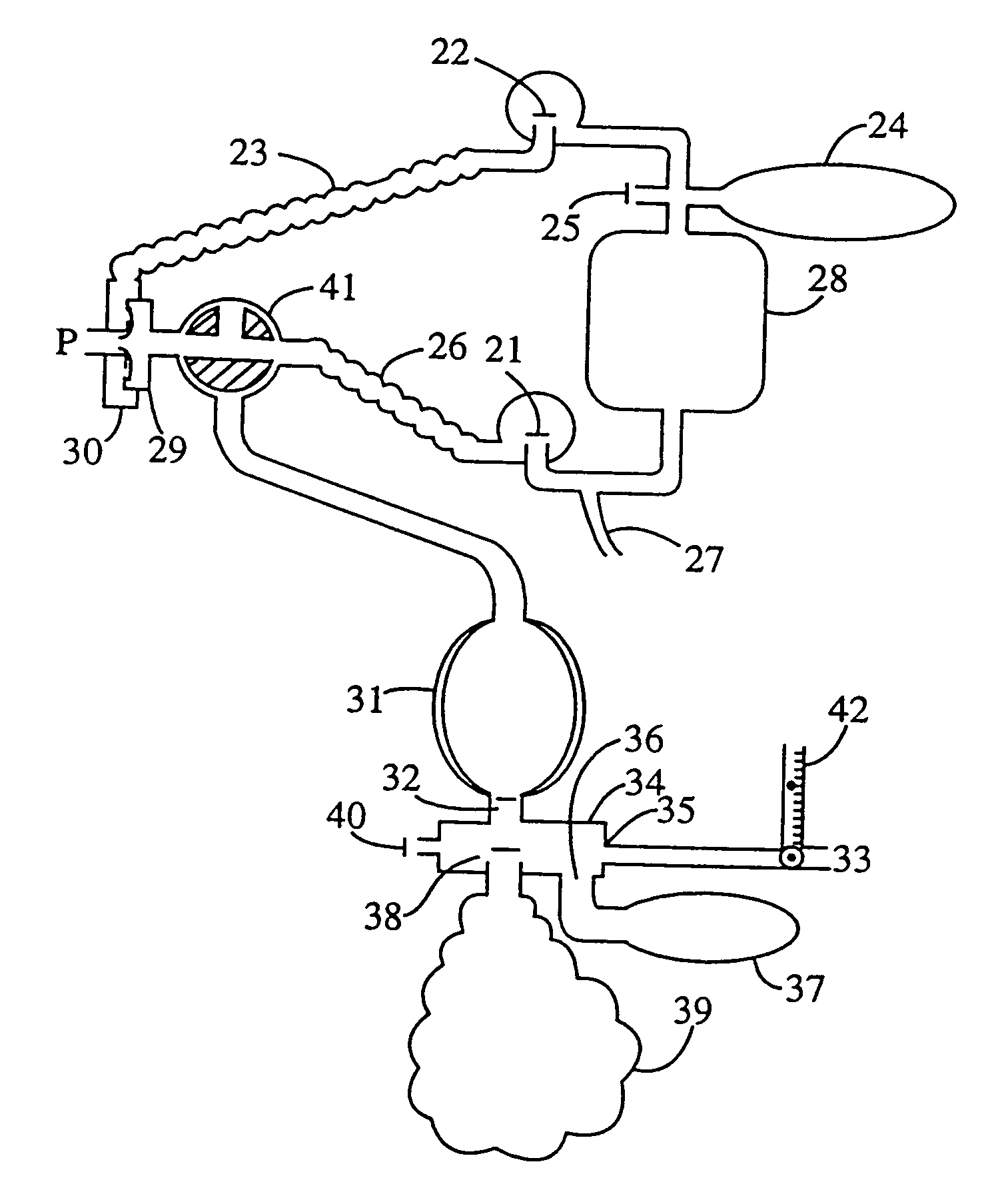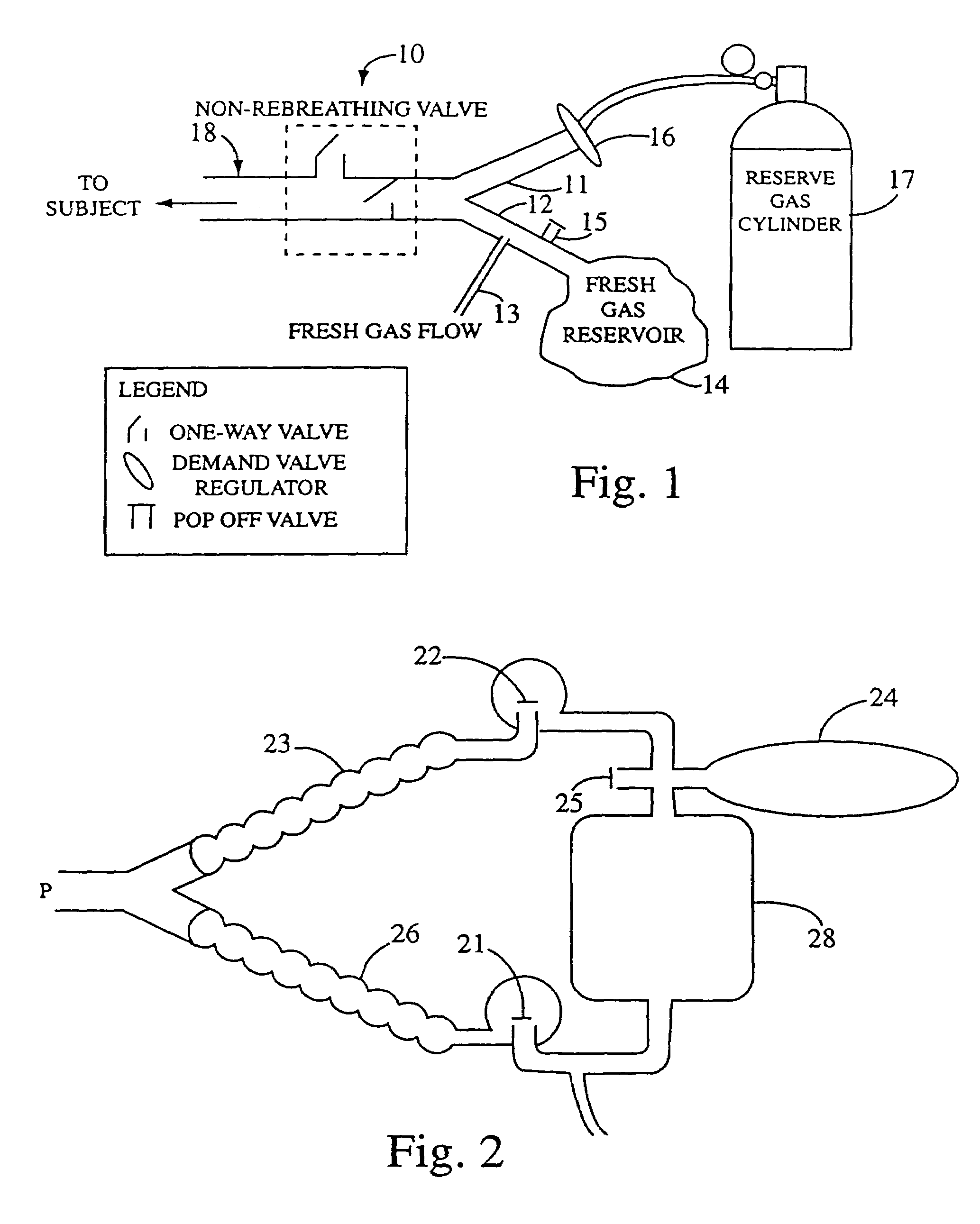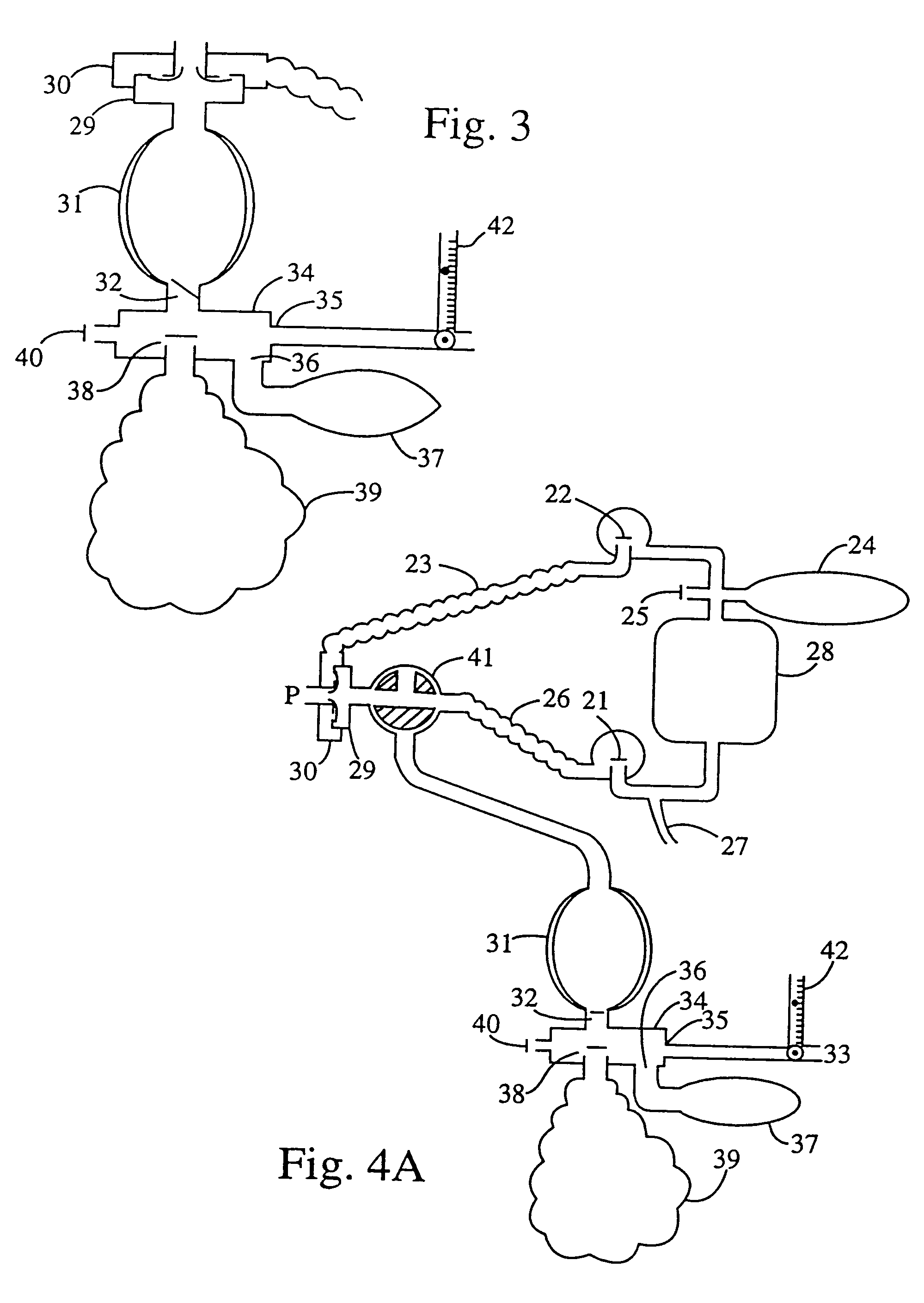Method of maintaining constant arterial PCO2 and measurement of anatomic and alveolar dead space
- Summary
- Abstract
- Description
- Claims
- Application Information
AI Technical Summary
Benefits of technology
Problems solved by technology
Method used
Image
Examples
Embodiment Construction
[0082]PCT Application No. WO98 / 41266 filed by Joe Fisher (WO98 / 41266) teaches a method of accelerating the resuscitation of a patient which has been anaesthetized by providing the patient with a flow of fresh gas (FGF) and a source of reserve gas is expressly incorporated herein by reference. As thought in WO98 / 41266, when the patient breathes at a rate less than or equal to the fresh gas flowing into the circuit, all of the inhaled gas is made up of fresh gas. When the patient's minute ventilation exceeds the fresh gas flow, the inhaled gas is made up of all of the fresh gas and the additional gas is provided by “reserve gas” with a composition similar to the fresh gas but with CO2 added such that the concentration of CO2 in the reserve gas of about 6% is such that its partial pressure is equal to the partial pressure of CO2 in the mixed venous blood. At no time while using this method will the patient rebreathe gas containing anaesthetic. In order to accelerate the resuscitation o...
PUM
 Login to View More
Login to View More Abstract
Description
Claims
Application Information
 Login to View More
Login to View More - R&D
- Intellectual Property
- Life Sciences
- Materials
- Tech Scout
- Unparalleled Data Quality
- Higher Quality Content
- 60% Fewer Hallucinations
Browse by: Latest US Patents, China's latest patents, Technical Efficacy Thesaurus, Application Domain, Technology Topic, Popular Technical Reports.
© 2025 PatSnap. All rights reserved.Legal|Privacy policy|Modern Slavery Act Transparency Statement|Sitemap|About US| Contact US: help@patsnap.com



